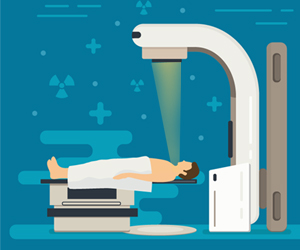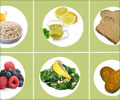Antioxidants in tomato juice such as lycopene and beta-carotene may reduce DNA damage, following low-dose x-ray or radiation exposure during investigations.
- Diagnostic X-ray imaging is very commonly employed during the course of investigations for many diseases.
- Low dose ionizing radiation exposure through x-rays, could cause DNA damage largely via oxidative cell damage.
- Antioxidants in tomato juice shown to decrease cell biomarkers of DNA damage following low levels of ionizing radiation exposure and confer a protective effect.
Reason For Study
Diagnostic imaging using x-rays is widely employed during the course of investigations into several diseases. There is always the risk however small of cell and DNA damage associated with low-dose radiation exposure during these tests. The authors of this study wished to assess the effects of drinking tomato juice regularly on the degree of DNA damage and levels of oxidative stress in blood cells (lymphocytes) exposed to ionizing radiation.How was the Study Conducted?
- Ten healthy adults were asked to regularly consume 190 gms of tomato juice for three weeks and then discontinue consumption for 3 weeks.
- Peripheral blood samples were drawn before the start (baseline), just after completing the 3 week course of drinking tomato juice and after the washout period of three weeks.
- The baseline levels of radiation biomarkers in the nucleus such as MN and DIC, levels of oxidative stress were measured by estimating serum 8-oxo-7, 8-dihydro-2-deoxyguanosine (8-oxo-dG) and plasma reactive oxygen metabolite-derived compounds (d-ROMs) and plasma levels of antioxidants (carotenoids) were measured.
- The blood was then exposed in vitro to low X-ray (ionizing radiation) doses of 0, 0.1, 0.5, and 2 Gy
What were the Findings of the study on DNA damage induced by X-rays and drinking of Tomato Juice?
- The levels of 8-oxo-dG tended to fall during the intake period and rise during the washout period. The differences were, however, not statistically significant.
- Intake of tomato juice significantly elevated the circulating levels of lycopene by 1.5 and β-carotene by 1.26-fold.
- A non-significant inverse correlation was noted between the plasma concentrations of antioxidants namely lycopene plus β-carotene and level of 8-oxo-dG was noted during the same period.
- The radiation-induced frequencies of radiation biomarkers such as MN and DIC increased in a dose-dependent manner in all 3 samples i.e. baseline, during tomato juice intake and washout period.
- However the frequencies of MN and DIC increase were lower in the ‘intake period’ samples compared to the baseline samples.
- Statistically, significant reductions in MN and DIC frequencies were observed in the samples irradiated with 0.5 Gy.
What is the Mechanism of DNA Damage in Low-dose Ionizing Radiation Exposure?
- X-rays cause DNA damage in two different ways i.e. directly by causing ionization and excitation of DNA molecules and indirectly through the formation of reactive oxygen species (ROS) by radiolysis of water molecules in the cell.
- The damage caused by ROS generated by hydrolysis of cellular water molecules accounts for 70% of DNA damage occurring following the exposure to low dose ionizing radiation such as x-rays.
- Also, endogenous production of free radicals from the mitochondria increases following ionizing radiation exposure.
- Different DNA repair systems act on the damaged DNA to try and restore the original DNA sequences. However, the repair processes are not error free and may result in mutations including micronuclei formation and dicentric chromosomes which are measured as biomarkers for radiation induced DNA damage.
- In addition to the DNA molecule per se, ROS can also react with free DNA precursors in the cytoplasm (nucleotide pool, dNTPs) and modify their structures. Such altered or modified dNTPs may get incorporated into the DNA during replication, causing point mutations.
What are Carotenoids?
Carotenoids such as lycopene and beta-carotene are antioxidants that can protect the cell from ROS mediated DNA damage.Studies have shown that regular intake of carotenoid containing foods can reduce the risk of cancers, heart disease and chronic diseases. A lot of recent research seems to suggest that many diseases and cancers are as a result of cell and organelle damage as a result of ROS generated within the cell due to various reasons.
What is the Scope of The Study?
The results of the current study seem to suggest that tomato juice intake may be beneficial in persons exposed to low dose radiation, such as during diagnostic imaging purposes. However, the authors caution that this is a preliminary study involving only 10 healthy participants and future research has to be conducted in larger setups.Nevertheless the results of this pilot study are promising, warranting further validation in future studies.
References:
- Radiation-induced biomarkers for the detection and assessment of absorbed radiation doses - (https://www.ncbi.nlm.nih.gov/pmc/articles/PMC3148623/)
Source-Medindia
















